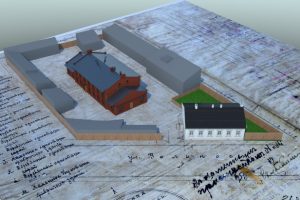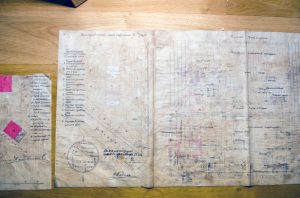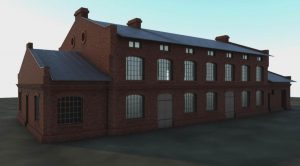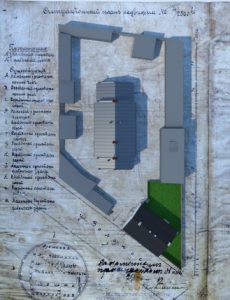Enthusiasts of Warsaw’s history have digitally reconstructed a 19th-century factory after finding original plans in thrown-away old furniture. The oldest of the documents dates to 1881.

The documents focus on a non surviving factory that was located by the former Wolności street (Freedom Street) in the Muranów district of Warsaw. Basing on the plans the enthusiasts who found the documents retraced the parcel’s and building’s history, and moreover they were able to digitally reconstruct the factory. It consisted of a cluster of buildings, with the main, one storey tall, brick hall in the centre and a brick office building by the street. Other buildings were probably wooden and were located around the edges of the parcel.


The notarial act is dated to 1881 and issued for Adolf Rentel, possibly a brother to the famous Józef Rentel, the founder and director of the carriages factory “Rentel i Spółka“. Adolf was his younger brother, a tannery master, who lived until early 20th century. At present it is not yet unknown when the factory building was erected. It is known however that the architectural plans date to 1912 and are signed by an individual named Gebel. It was possible to establish that the parcel was sold in 1909 by an Albert Neuman and bought by Józef and Julia Gebel (Goebel). These new owners prepared the plans, paid the debt and in 1920 sold the ground to a factory of toys and wooden ornaments, Fabryka Zabawek i Galanterii Drzewnej “Wiór”. The factory existed until 1930.

In the same year the parcel was bought by Towarzystwo Opieki nad Ociemniałymi (Society for care of the blind) which set up its office there. It existed there until 1940 when the building was incorporated within Warsaw’s ghetto by German occupants. During and after the Warsaw Uprising the building was demolished, and its equipment probably shipped to Germany. At present, the finders of the documents are willing to hand them over to any willing museum in Warsaw.

(after TVN Warszawa, Oko na Warszawę, Michał Chęciński)